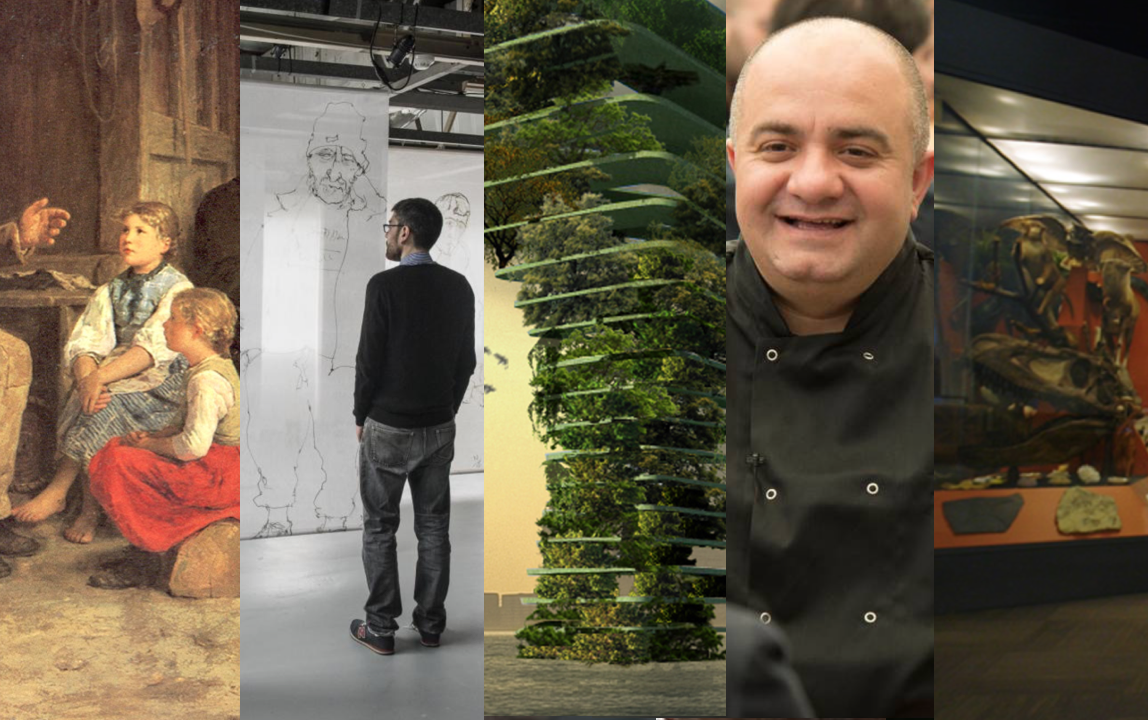
This week’s Roundup shares stories about storytelling, migration, war, trust, taking a stand and future trendcasting. Enjoy!
1. Bethany Hawkins, Chief of Operations at AASLH, writes about the role of the Chief Storyteller, which has been adopted by some companies in the for-profit sector to humanize their brands. Hawkins argues that cultural organizations could learn from this approach. She asks, “how can the history field reframe our ‘elevator speech’ or typical luncheon presentation to focus less on who we are and what we do and more on our impact on society?”
Chief Storytellers and the Search for Relevance: What History Organizations Can Learn from This For-Profit Trend
by Bethany Hawkins, Chief of Operations, AASLH on Over the weekend, I was having a conversation with my husband, who works for a regional financial institution. He told me that his company recently hired a Chief Storyteller. Their job is to travel throughout their region to gather stories from fellow employees and clients about how they used the bank to achieve financial confidence.
2. London’s new Migration Museum at The Workshop showcases stories of Britain’s history of migration, from the arrival of the Celts and the Romans to the current migrant crisis in Europe. “Exhibitions confront you with an individual story, rather than the dry statistics. It’s more dramatic and moving — rather than the heavy, burdensome topic when migration is covered in the media,” says Robert Winder, a trustee of the project.
How London’s Migration Museum tells untold stories of refugees
The centrepiece of London’s new Migration Museum is a mound of neon lifejackets. But that last word is a misnomer. They are death-jackets, designed to sink, fakes filled with tissue, polystyrene or newspaper. They were collected by an aid worker in Lesbos, Greece, and are embedded with the stories of refugees who arrived in Europe by boat, including some who travelled on to the Calais “Jungle” camp.
3. The Imperial War Museum in London has hosted a pop-up Conflict Café where visitors are invited to sit down with Syrian refugees and aid workers and ask any questions to learn from individual experiences of the war in that Middle Eastern country. “The main idea was to try and give the public a basic introduction to what is a very complicated conflict,” Christopher Phillips, a curator for one of the related exhibitions.
Understanding Syria: London museum invites visitors to ask refugees
“For the first time, it feels like I’m an important person” By Anna Pujol-Mazzini LONDON, April 27 (Thomson Reuters Foundation) – “How did you leave Syria?”, “Is your family still in Aleppo?”, “How do you move forward after fleeing Syria?”
4. Museum data maven, Coleen Dilenschneider, sifts through the National Awareness, Attitudes, and Usage Study survey data to make some sense of audience attitudes towards museums. She finds museums are revered as highly trusted institutions whereas “people think that it’s the job of museums to recommend behaviors.” How can museums ensure they meet up to audience expectations for guidance when so many issues have become politicized?
People Trust Museums More Than Newspapers. Here Is Why That Matters Right Now (DATA)
Actually, it always matters. But data lend particular insight into an important role that audiences want museums to play right now. “Are museums perceived as experts – and are they trusted? To what extent?” These are the questions that I hoped to shine a light upon when I requested a topic-specific data cut on cultural organizations from the National Awareness, Attitudes, and Usage Study.
5. Hey, we launched a digital edition of TrendsWatch 2017 from the Center for the Future of Museums! The online report keeps up-to-date with the trends through listings of current articles and Twitter feeds. Let us know what you think using this survey.
Trendswatch 2017
“The goal of forecasting is not to predict the future but to tell you what you need to know to take meaningful actions in the present”Paul Saffo This report explores trends-one type of force that shapes our world Because trends exert their influence incrementally, acting over time in an observable
Happy weekend!
Do you have a great museum story to share? Let us know in the comments!








